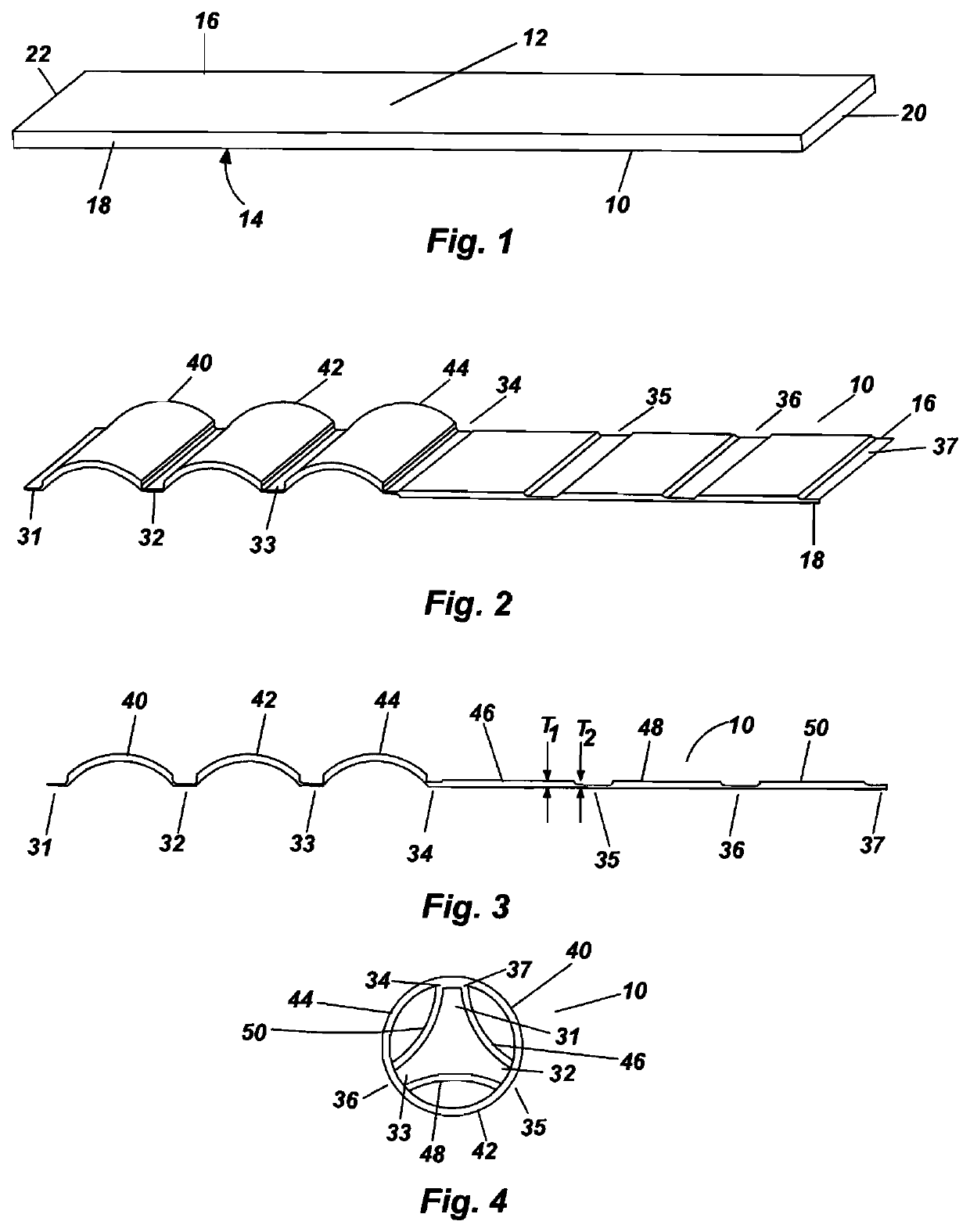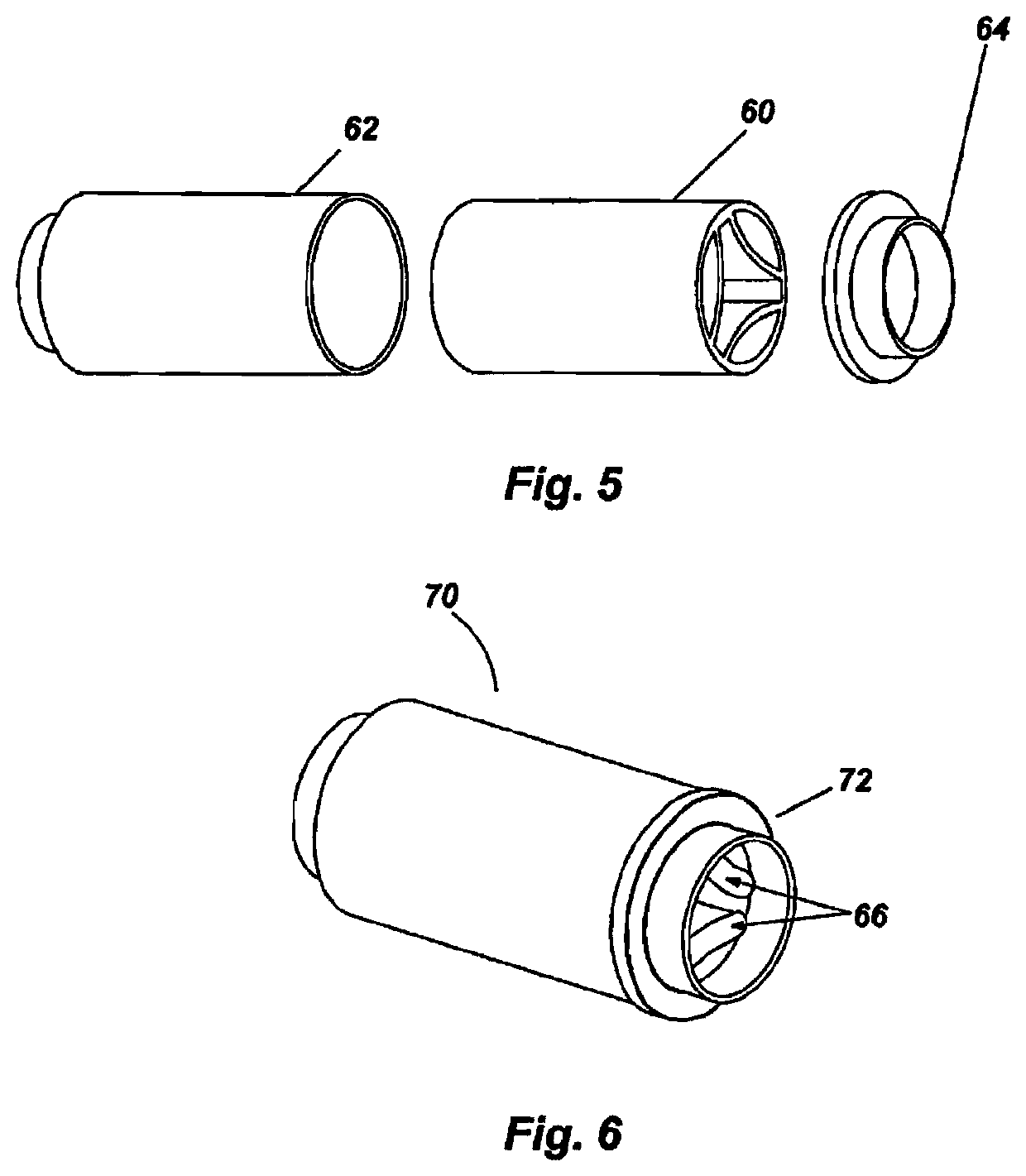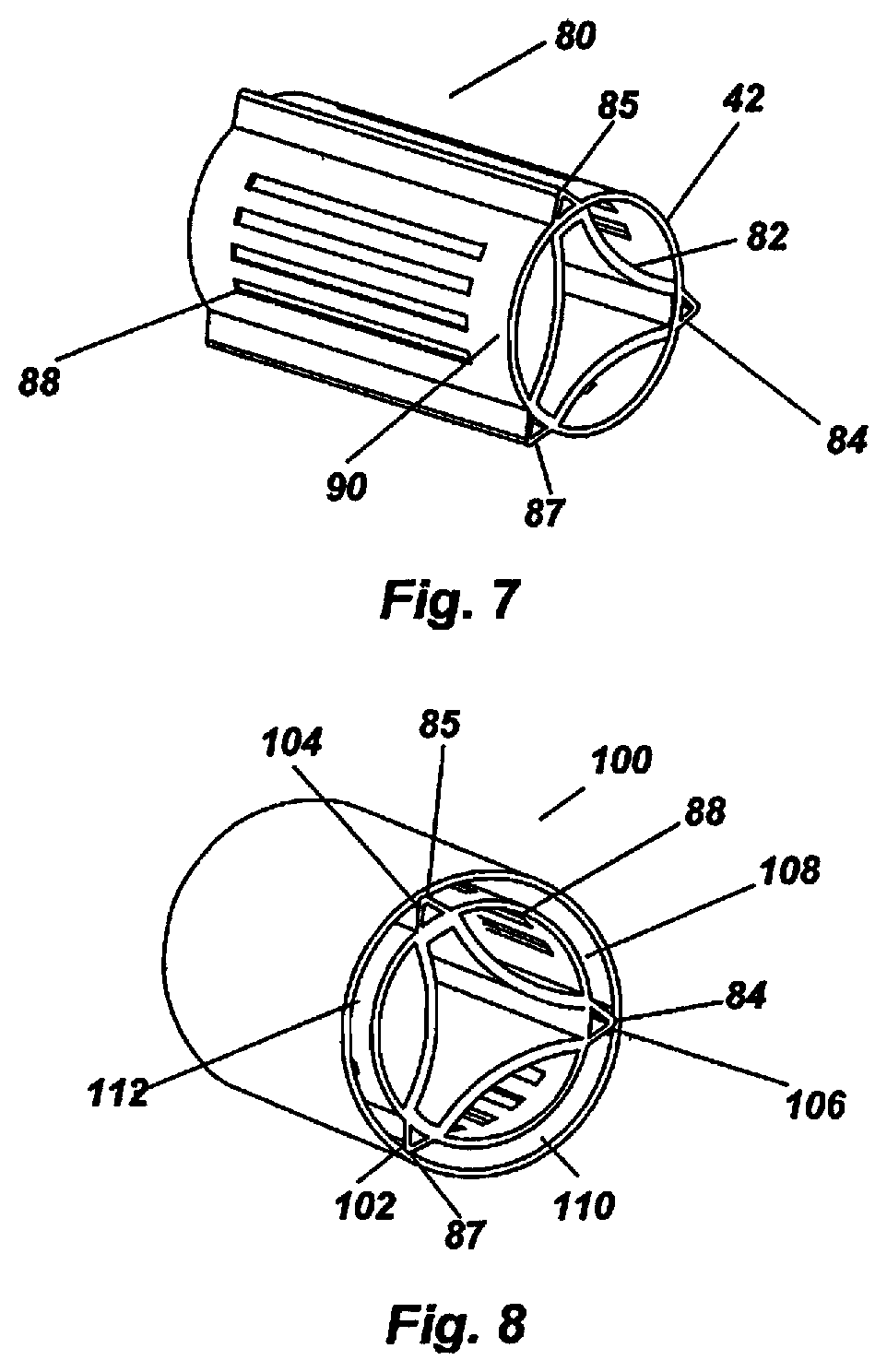Inline high frequency fiber silencer
a high frequency fiber silencer and silencer technology, applied in the field of vehicle airflow systems, can solve the problems of reducing the performance of resonators such as helmholtz, qwts, and unable to target such high frequencies, and achieve the effect of improving airflow resistance and optimizing acoustic performan
- Summary
- Abstract
- Description
- Claims
- Application Information
AI Technical Summary
Benefits of technology
Problems solved by technology
Method used
Image
Examples
Embodiment Construction
[0031]Detailed embodiments of the instant invention are disclosed herein, however, it is to be understood that the disclosed embodiments are merely exemplary of the invention, which may be embodied in various forms. Therefore, specific functional and structural details disclosed herein are not to be interpreted as limiting, but merely as a basis for the claims and as a representation basis for teaching one skilled in the art to variously employ the present invention in virtually any appropriately detailed structure.
[0032]FIG. 1 is a generally rectangular blank of a preferably nonwoven fiber mat 10, perhaps as a combination of different mats, woven materials, films, or foam layers, with a total basis weight of about 800-1000 grams per square meter, selected to offer the required structural and acoustic properties once formed. A specifically chosen mat construction composed of fibers that could be selected from a range of organic, inorganic, synthetic, or naturally occurring fibers, o...
PUM
| Property | Measurement | Unit |
|---|---|---|
| frequencies | aaaaa | aaaaa |
| frequencies | aaaaa | aaaaa |
| frequency | aaaaa | aaaaa |
Abstract
Description
Claims
Application Information
 Login to View More
Login to View More - R&D
- Intellectual Property
- Life Sciences
- Materials
- Tech Scout
- Unparalleled Data Quality
- Higher Quality Content
- 60% Fewer Hallucinations
Browse by: Latest US Patents, China's latest patents, Technical Efficacy Thesaurus, Application Domain, Technology Topic, Popular Technical Reports.
© 2025 PatSnap. All rights reserved.Legal|Privacy policy|Modern Slavery Act Transparency Statement|Sitemap|About US| Contact US: help@patsnap.com



